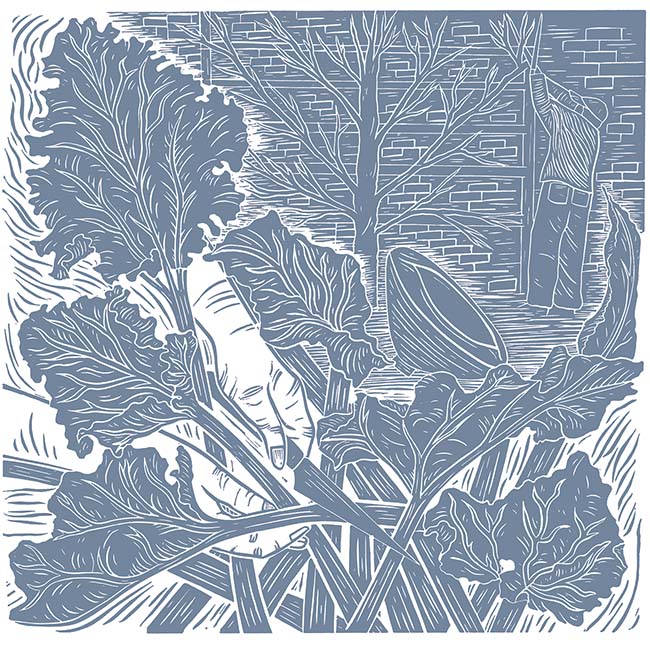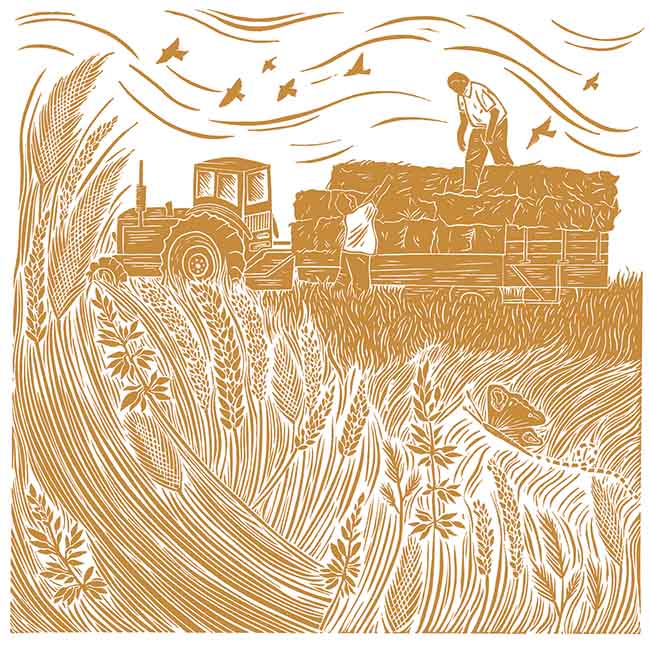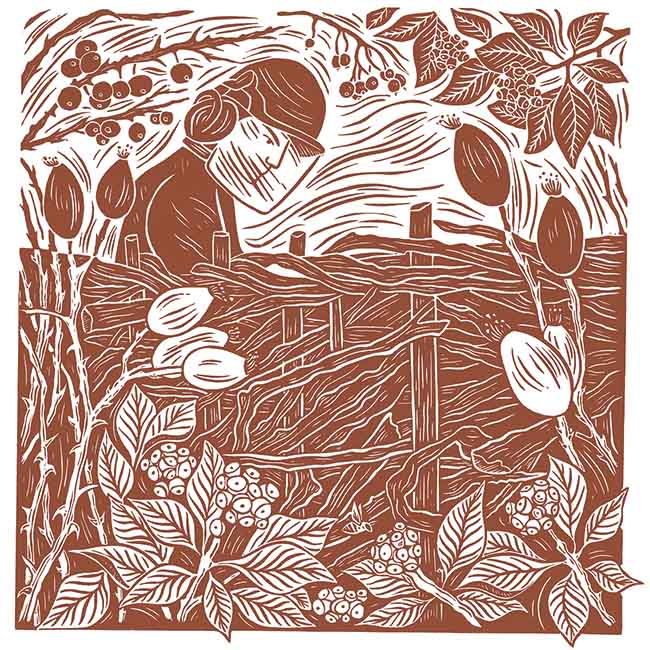Lorem ipsum dolor sit amet, consectetur adipiscing elit. Quisque fringilla, purus a rhoncus rutrum, odio ipsum blandit justo, a ultrices purus odio id turpis. Donec vitae hendrerit neque. Donec porta, odio sed commodo sollicitudin, erat velit ornare metus, at bibendum augue neque at lorem. Cras ultrices risus at lectus volutpat, sit amet ullamcorper massa vulputate.
January - Warming Squash and Lentil Curry (Peter Samson)

January – Warming Squash and Lentil Curry (Peter Samson)
<Ingredients
1 tbsp coconut oil
2 tins coconut milk
3 medium onions
3 garlic cloves
120g ginger root
1kg squash or pumpkin flesh
700ml veg stock
300g red lentils or split fava beans
400g greens
5 or 6 whole cherry toms (or a tin of chopped toms)
juice of a lime
100g coriander
salt and black pepper
Spice mix:
6 cardamom pods
1 tsp mustard seeds
2 tbsp cumin seeds
2 tsp ground turmeric
2 tbsps fennel seeds
2 tbsps coriander seeds
1 tsp cinnamon
1/2 tsp chilli flakes
1/4 tsp ground cloves.
You can substitute ready ground spices for whole spices using 1/4 the amount.
Method:
Chop garlic into tiny pieces. Peel and grate the ginger. Peel and chop the squash into bite size pieces. Make spice mix by grinding spices in pestle and mortar. Chop onions finely, Add coconut oil to spice mix and wait for it to melt in a pan on low heat. Add onions, garlic and ginger and fry for a few minutes, until golden. Add coconut milk, squash and veg stock. After 10 minutes (still on gentle to medium heat) add the lentils. Add more stock if it looks a bit dry. Add the whole tomatoes or tin of chopped tomatoes. In the last few minutes, add your greens. Season with salt and pepper. This recipe is inevitably better if you make it the day before you need it and it’s worth making more and freezing some.
February: Lacto Fermented Rhubarb - shared by Sophie O

Lacto Fermented Rhubarb – shared by Sophie O.
Lacto fermented rhubarb – shared by Sophie O. Underdown Lester and Tara Hill of Wild Combination, an experimental food project producing sensory and social, plant focused food inspired by seasonal ingredients, herbalism, and a quest for new flavour combinations.
www.wildcombination.co.uk
You will need: Washed, chopped rhubarb, 2% of the weight of your rhubarb in salt. A sterilised jar big enough to fit all your chopped rhubarb in with space of at least 5cm at the top. Smoosh the rhubarb and the salt together with your hands until you make a brine from the juice of the rhubarb you can submerge all the rhubarb under. This can take a few minutes and quite a bit of elbow grease!
Put the rhubarb into your jar. Pack it down and make sure there are no air pockets. Pour the brine over the top, being careful not to spill any. If you have an accident and lose some just make up a 2% salt brine to top it up with. Weigh the rhubarb down with a fermentation weight if you have one or you can fill a clean ziploc plastic bag half way up with water, seal it and then place it on top of your ferment to keep everything below the brine level and stop any rhubarb from floating to the top. Put the lid on but don’t screw it tightly shut. During the first stages of the ferment it’ll produce carbon dioxide and this can build up in the jar. The gas needs to be able to get out. If you use a kilner jar you’ll need to ‘burp’ it every few days until it stops bubbling. How long to leave it depends on the time of year/ how warm it is in your house. Ferments work faster in warm weather. I usually wait until it’s stopped bubbling (this can take from 7 days to a month or more) and then I taste it. If it’s tangy and I like it, I put it in the fridge to slow down the fermentation to almost a halt. If I’d like it a bit tangier I leave it longer.
Suggestions for use: We use it as a tasty tangy addition to salads. It goes particularly well with nasturtium leaves or any other bitter leaves. We use it where you might use smoked salmon- while it doesn’t at all taste the same it can often provide a similar function. E.g. with cream cheese on crackers, or with poached eggs on toast. When you’ve eaten all the rhubarb keep the brine and use it in a salad dressing. Feel free to add extra herbs or spices in when you ferment your rhubarb too- things we’ve added in the past that have worked well are fresh tarragon and black pepper or chilli flakes. We’ve also used smoked salt before which was a winner and added to the faux smoked salmon effect!
March: Cawl (or Lobscouse in North Wales) - shared by Jacqui Banks

Cawl (or Lobscouse in North Wales) – shared by Jacqui Banks
This is one of our winter favourites- we make it a couple of times a month between October and March using meat from our flock of Bager Face Torwen sheep. It’s a classic Welsh dish that everyone has a slightly different recipe for.
1 or 2 knuckles of hogget (or lamb or mutton) I often use a half shoulder, half leg or neck depending on what we have but it is a great use of the knuckle if you keep your own sheep and don’t have other ideas for it. If I have any extra bones I put them in too. However much the cut of meat weights I use roughly half that weight each of swede, carrot, leek and potato. Cut them all into chunks or fat slices in the case of the leek- you don’t want any of it too finely chopped. Place the joint in a pan and cover with water. Add a good amount of salt and simmer until the meat is tender and falling off the bone. I use a pressure cooker and usually cook it for an hour. If you don’t have a pressure cooker then I think it would take about 3 hours. Remove the meat and any bones from the stock. Place on a plate to cool a little. Add the potatoes, swede and carrots to the stock and bring to the boil with plenty of fresh thyme and black pepper. Simmer for 5 minutes then add the leeks. Whilst they are cooking strip the meat off the bone and shred it up. Once the veg is cooked through add the shredded meat and reheat for a few minutes. Salt to taste. Serve with a thick chunk of mature cheddar cheese on the side. If you use a kilo joint of meat on the bone it makes around 8 large portions.
April: Palestinian Hummus - shared by Fuad and Yazan

Palestinian Hummus – shared by Fuad and Yazan
Palestinian Hummus – shared by Fuad and Yazan from the Union of Agricultural Work Committees (UAWC). UAWC work alongside Palestinian, Arab and international organizations and help support and protect the rights of Palestinian national farmers. UAWC-pal.org
Ingredients:
2 cups cooked chickpeas (you can use canned chickpeas)
1/4 cup tahini (sesame paste), 1/4 cup extra virgin olive oil
2 cloves garlic, minced, Juice of 1-2 lemons (to taste)
1 tsp ground cumin, Salt to taste, Fresh parsley, chopped (for garnish), Paprika (for garnish), Extra olive
oil (for drizzling)
Instructions:
In a food processor, combine the cooked chickpeas, tahini, minced garlic, lemon juice, ground cumin, and salt. Blend until smooth. If the mixture is too thick, you can add a bit of water or extra lemon juice to achieve the desired consistency. Transfer the hummus to a serving dish. Drizzle with extra virgin olive oil. Garnish with chopped fresh parsley and a sprinkle of paprika. Serve with pita bread, fresh vegetables, or as a spread on sandwiches.
May: Mussels cooked in Sea Truffle Butter - shared by Câr-Y-Môr,

May – Mussels cooked in Sea Truffle Butter – shared by Câr-Y-Môr
Mussels cooked in Sea Truffle Butter – shared by Câr-Y-Môr, the first community-owned regenerative ocean farm in Wales, located in the beautiful waters of Ramsey Sound, off the Pembrokeshire coast.
www.carymor.wales
Ingredients Serves 2-4:
1kg mussels
1 cup white wine
2-3 tbsp *Sea Truffle Butter
Salt and pepper to serve
Recipe:
Place your mussels in a saucepan with a cup of dry white wine, bring to the boil and then simmer for 3 minutes or until all the mussels have opened. Once cooked add in generous amounts of your truffle butter and let it melt over the mussels. Serve with or without the white wine broth.
*Sea Truffle Butter is Pepper dulse (Osmundea pinnatifida) mixed with Welsh organic salted butter and a little bit of sea salt. A modern classic.
June: Digestive, calming herbal tea - shared by Jo Kamal

Digestive, calming herbal tea – shared by Jo Kamal
Digestive, calming herbal tea – shared by Jo Kamal, LWA Member and Hampshire based market gardener So many medicinal herbs and flowers are in full bloom come late June, including some of my favourites like chamomile, calendula, mint and mugwort. Meadows, hedges and farms are bursting to life at this time of year – and the amount of hours we have to put in as landworkers to keep up seems to just keep rising. In the hubbub of summer, I am always grateful for the reminder to slow down and observe the oak trees as their youthful green leaves begin to turn to a darker hue. When it comes to recipes for teas, I like to follow traditions which don’t call for strict quantities but instead allow you to be guided by what plants you are drawn to and what tastes best to your palate. Harvest respectfully; asking permission, taking only what you need and leaving an offering for the plant, as Robin Wall Kimmerer writes in Braiding Sweetgrass. For a digestive and calming tea, try a small handful of fresh chamomile alongside a few sprigs of mint in a teapot. Let steep for 10-15 minutes (or longer if you want it to be stronger), strain and drink.
When drinking, notice where you feel the tea supporting your body. Sit down. Feel the air on your skin. Give thanks for the summer. Rest.
July: Tostada con tomate from Almería by way of Pembrokeshire - Shared by Kate McEvoy

Tostada con tomate from Almería by way of Pembrokeshire – Shared by Kate McEvoy
Tostada con tomate from Almería by way of Pembrokeshire – Shared by Kate McEvoy, LWA Cymru member, co-founder of Real Seeds and campaigner for seed sovereignty.
www.realseeds.co.uk
Ingredients:
1-2 Large ripe tomatoes (or a good handful, around 250g, of cherry tomatoes)
1 Clove of garlic
Sea salt and black pepper
Good, local bread
Olive oil
Method:
Take the tomatoes, garlic, a generous pinch of sea salt & a slug of olive oil.
Blend together with a stick blender. Toast thick cut slices of good local bread & spread with the mix. Add a drizzle more olive oil & extra sea salt to taste.
August: Challah Recipe Miknaf Ha’aretz

Challah Recipe Miknaf Ha’aretz
Challah Recipe Miknaf Ha’aretz, www.miknafhaaretz.co.uk @miknafhaaretz
Intro – Samson Hart
Challah is a sacred bread that we bake and eat each Friday night for the holy meal of shabbat. Its origin comes from the Ashkenazi jewish tradition, and was likely picked up there, though now there are versions of challah across the Jewish world. Its form as a braided golden egg-washed loaf is relatively recent: “For centuries, challah did not have a specific form, but in the fifteenth century in Austria and southern Germany, Jews adopted the shape of a Teutonic solstice bread, braided to resemble the hair of a malevolent demon called Bertcha or Holle. Jewish families dropped the solstice and demon references but kept the braided loaves, visiting them to the center of Shabbat and holiday celebrations” (p.47 The Jewish Cookbook, Leah Koening)
Challah is always blessed before we eat the shabbat meal, to celebrate the end of the working week and to rejoice in the beginning of a day of rest. I’ve picked up from teachers and friends, rituals and contemplations that have transformed the process of making challah. As I pour oil into the dough before kneading, I call out the names of all the beings, people, places I wish to bless. Whilst I’m braiding the bread, I imagine myself weaving into the thread of my ancestors. Picking up the thread from last shabbat, from last year, from my grandmother, her grandmother and beyond. And I always sing as I knead, as I braid, and as I bake. This recipe comes from our baker, friend and Miknaf member, Amy Perlin. Often you will find egg in the dough, but this recipe is vegan & totally delicious.
Recipe for two large loaves – from Amy Perlin
Ingredients
– Strong White Bread Flour – 910g
– 15g Yeast
– 150g Sugar
– 18g or 3tsp Fine Sea Salt
– 400 Water
– 180ml Neutral oil
– 200g Sourdough leven (optional)
Notes on the sourdough:
– You can make this without the sourdough and it will be good, but that will effect the flavour and the long lastingness (If you don’t use this replace the sourdough with 100 flour / 100water)
– I usually take out of the fridge a couple of days before and build up from a small amount – eg day 1 = 1 tablespoon starter + 1⁄4 cup flour + 1⁄4 cup water/day 2 add another 1⁄4 cup flour and water.
– Tbh i don’t do things exactly and just mix up a thick paste of flour and water with a small amount of starter. Given that this recipe has yeast and doesnt rely on the sourdough alone for the rise, you don’t need to worry too much about perfecting this.
Instructions – over 2 days
Day 1 – evening
– Mix dry ingredients in large bowl- flour, sugar, salt.
– Separately add yeast to water.
– Add water/yeast, sourdough and oil to dry ingredients.
– Mix to combine and then knead for around five minutes. Then leave the dough for 10-15 mins. Then knead the dough for another few minutes. The dough should be smooth and bouncy. Giving it time to rest between kneading will allow the gluten to develop.
– Place into an oiled container or bowl with some space for the dough to rise. Leave out for about 30 mins, then cover and place in fridge over night.
Day 2 – day time
– Divide into 2 and then divide into how many strands you are plaiting.
– For a 6 strand Challah – divide 6 pieces (each will weigh approximately 140g)
– Shape each piece into a sausage shape.
– Then take 6 pieces and roll into long strand.
– Plait the challah. Repeat with second loaf.
– Place on a lined baking sheet and leave to proof/rise for about an hour or 2 depending on
temp/humidity of the day.
– Preheat oven to 180 degrees.
– Brush loafs with a egg wash or a mixture of maple syrup (or honey) and vegan milk. Then
sprinkle with preferred seeds (usually poppy or sesame).
– Bake for 30 mins. Let cool on a baking rack, then enjoy!
September: Blackberry Mead - shared by Shaun Tuck

Blackberry Mead – shared by Shaun Tuck
Blackberry Mead – shared by Shaun Tuck LWA member and community forager and drinks maker at Company Drinks CIC based in Barking and Dagenham. www.companydrinks.info / @goingpicking / @forageandfizz
September is an amazing time to get out into the hedgerows to harvest the Berry of the Bramble, many of us have childhood memories of picking the purple juiced sweet berries when we were young, getting pricked by the sharp thorns, getting covered in berry juice or eating one too many. The humble blackberry however lends its flavour very well as an addition to mead, mead being the ancient boozy concoction of fermenting honey, water and yeast to make a honey wine. We have come a long way from just pouring water onto honey and letting the wild yeasts ferment into a wildly varied alcoholic drink.
Before you start, I will add a point about sanitation, it’s very important that all equipment used in the making process is sanitised, this stops other wild yeast and bacteria from spoiling the brew. I use Chem San, it is a liquid acidic sanitiser used by many brewers out there and can be purchased online, you can also order other sanitisers from brewer’s websites online. Firstly, fill a bucket with water and add the recommended amount of sanitiser and soak all equipment in this while you prepare the mead, this includes the demijohn, air lock, bung, muslin cloth and hydrometer. To start a mead, you will need to first collect some wild blackberries, you can surely use many other berries in their place, I use around 1.5kg of berries for a 1-gallon (4.5 Litres) batch, but you can add more or less to your taste. Once picked give them a wash and place in a pan with 2 litres of the water, filtered or bottled water is best but tap water will work fine. Bring the berries up to a boil allowing all the juices to be released, this will prevent any wild yeast spoiling the brew, crush with a masher if you have one. Once its boiling, add the tea bag (this adds tannins to the mead) and the juice of the lemon, once the berries have broken down all their juices strain through the cloth so you are only left with the liquid. Whilst the liquid is still hot, mix in the honey and the baker’s yeast, this will make sure the yeast doesn’t ferment and is only used as nutrient, and allows the honey to be properly dissolved in the water. If using a glass 1 gallon demijohn then you can pour the liquid in warm, making sure that the sanitiser has been emptied, if using a non-rinse sanitiser, don’t fear the foam, a bit of foam will likely be left over, just pour in the honey water and it will eventually evaporate. You can use a plastic 5 litre water bottle if you do not have a demijohn, but the honey liquid will need to be cooled before pouring in. The next step will be to fill the demijohn up using the rest of the water, fill up to the shoulder of the demijohn, the fermentation can get quite wild so any more than this and it will bubble and spill out of the airlock. Its important now to take a hydrometer reading, if you don’t do this now you won’t be able to find out the overall percentage of alcohol, you need to take a reading before it ferments, and then after, there are online calculators that will help you work out the percentage using the original gravity and final gravity.
Once you have got your hydrometer reading its time to add your yeast, there are many yeasts out there and most will give slightly different results, you can use any wine yeast, there are even a few mead yeasts available from online brewing shops, I tend to use Lalvin 71B or Lalvin EC 1118. You can use around half a packed for a 1-gallon batch, but make sure the mead is at room temperature, if you put yeast into heated liquid it will die, usually between 18-26 degrees works best. With the airlock filled with sanitiser solution, place it on top of the demijohn in the rubber bung, this allows Co2 from the fermentation to escape but stops oxygen and bacteria getting in. If you don’t have an airlock, you can use a balloon with holes poked in with a pin, but don’t ferment in a sealed container as it will explode into a sweet and sticky mess.
Now all there is to do is wait, fermentation will take between 7-14 days at room temperature, if kept in a warm or cold space the yeast may not do their job, they are quite fussy like that, the Co2 will be released, and you will see the air lock bubbling away. I would suggest letting it age at least 3 months, it will taste young and unbalanced before that, the longer you leave it the more the flavours will mellow, after 3 months take a hydrometer reading and bottle, you can use a sanitised syphon for this as the yeast cake (lees) should have settled by now and the mead is clear. I suggest not ageing much more than a year in the bottle, if you can manage to save it that long, as there is chance it will oxidise, meaning it will turn dark and taste like sherry, its not nice to drink.
There you have it, with this method you should have 4-5 bottles of 11-14% mead, this should be just in time for a Christmas tipple, or even for gifts for others. You can make a simple mead without the berries, or use any other delicious berry you want, the honey you use will have an effect on the flavour of the mead so use your favourite honey if possible. Happy brewing.
Summary:
● Sanitise Equipment: Soak all equipment in a sanitiser solution before use.
● Prepare Blackberries: Boil blackberries in 2 litres of water, add a tea bag and lemon juice, strain
the liquid.
● Mix Ingredients: Dissolve honey and baker’s yeast in the hot blackberry liquid.
● Fill Demijohn: Pour the mixture into a demijohn, top up with water, and take a hydrometer
reading.
● Add Yeast: Once at room temperature, add the wine, champagne, or mead yeast and fit the
airlock.
● Fermentation: Allow to ferment at room temperature for 7-14 days.
● Ageing: Let the mead age for at least 3 months before bottling and consuming.
October: Dolmadakia (Greek Stuffed Vine Leaves) - shared by Dionysios 'Dennis' Touliatos

Dolmadakia (Greek Stuffed Vine Leaves) – shared by Dionysios ‘Dennis’ Touliatos
Dolmadakia (Greek Stuffed Vine Leaves) – shared by Dionysios ‘Dennis’ Touliatos, LWA Member and head organic grower and FarmStart trainer at The Plot in Lancaster, North Lancashire.
Ingredients:
80 vine leaves (400g),
350g rice,
2 onions grated,
2 bunches chopped spring onions,
olive oil,
handful each of chopped parsley, chopped dill and chopped mint,
1 lemon,
1 tomato, chopped,
salt, freshly ground black pepper.
To prepare fresh vine leaves: Rinse well under cold water, drain, and remove stems. Blanch the leaves in boiling water until soft (1 to 2 mins depending on the size of the leaves) drain.
For the filling: Chop leaves of dill, mint and parsley. Keep the stalks. Add the rice, onions, herbs, tomato, salt, pepper and plenty of olive oil to a bowl and mix well.
Rolling: Take a vine leaf in your palm, vein side up, add a spoonful of filling, close the two sides and then roll up. The shiny side of the leaf should always be visible when the dolmadakia are rolled. In the cooking pot: Lay the rolled vine leaves in a row on the base of the pot. Place between the dolmadakia the stalks of mint, dill and parsley that we kept for extra aroma and flavour.
Place the dolmadakia row by row in the pot, close to each other, join side down. Cover with a row of vine leaves. Pour over plenty of olive oil and cover with a plate so that they do not unravel during cooking. Place a weight on the plate so the dolmadakia don’t dance as they cook and open. Pour over enough water to cover them. Bring to a boil, lower the heat and simmer until the water has almost evaporated, about 25 minutes. Leave them in the pot to cool and absorb the remaining liquid for 15 minutes. Add fresh lemon juice and serve at room temperature.
November: Leek and black pepper Sauerkraut - shared by Lauren Simpson

Leek and black pepper Sauerkraut – shared by Lauren Simpson
Leek and black pepper Sauerkraut – shared by Lauren Simpson, LWA Member and market gardener for fermented food business Parc y Dderwen in Pembrokeshire, Wales.
A great way to use a cabbage glut and support a healthy gut with lots of good bacteria in your diet. The addition of leek and black pepper gives this kraut an added punch – great in sandwiches!
Ingredients:
1kg white cabbage,
250g leek,
2g ground black pepper,
10g sea salt
Method:
Wash and peel cabbage as needed. Finely chop cabbage. Mix cabbage with the salt in a large mixing bowl and massage/pound until a puddle of liquid forms in the bowl. Wash leeks and peel outer skin, making sure to remove any hidden mud. Finely slice leeks. Add black pepper and leeks to the cabbage.
Mix all ingredients well. Put mixture into a large enough glass jar / crock / bucket, one layer at a time pressing down well to remove air pockets. Place a plate/cabbage leaf/plastic disc on top of mixture to cover the surface. Add a weight of some kind to keep the mixture submerged in liquid – e.g. a glass jar or zip lock bag filled with water. Cover the vessel. Either with a teatowel, piece of muslin or loose fitted lid OR a lid with an airlock on it. It’s important that air can get out but flies don’t get in! Check your sauerkraut every few days until you like the taste. Approx 1-3 weeks for a fresh crunchy kraut. Keep it in the fridge to slow down the ongoing fermentation. You can also decant it into smaller jars and lid them to keep fresh.
December: Ham Hock Hotpot shared by Jyoti Fernandes


